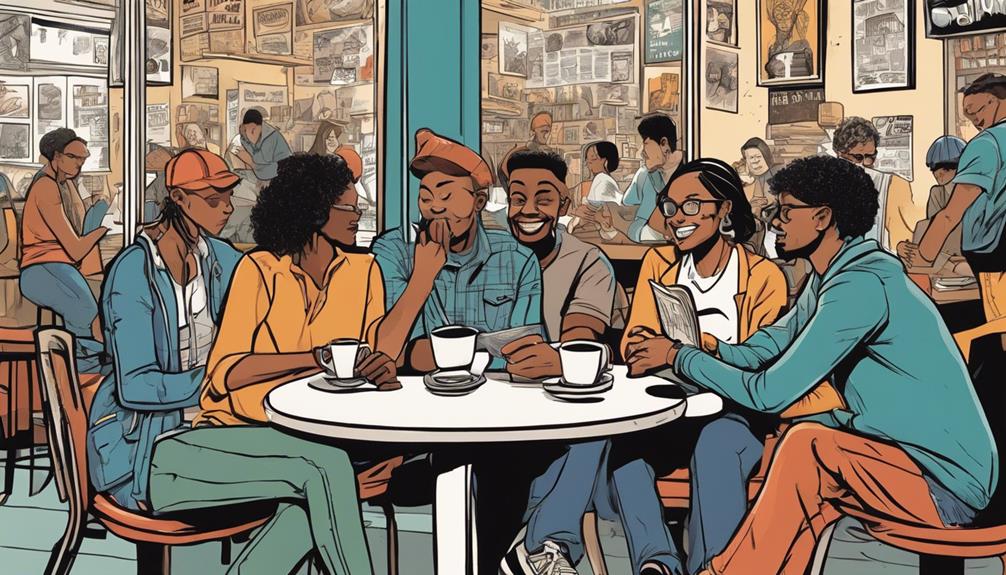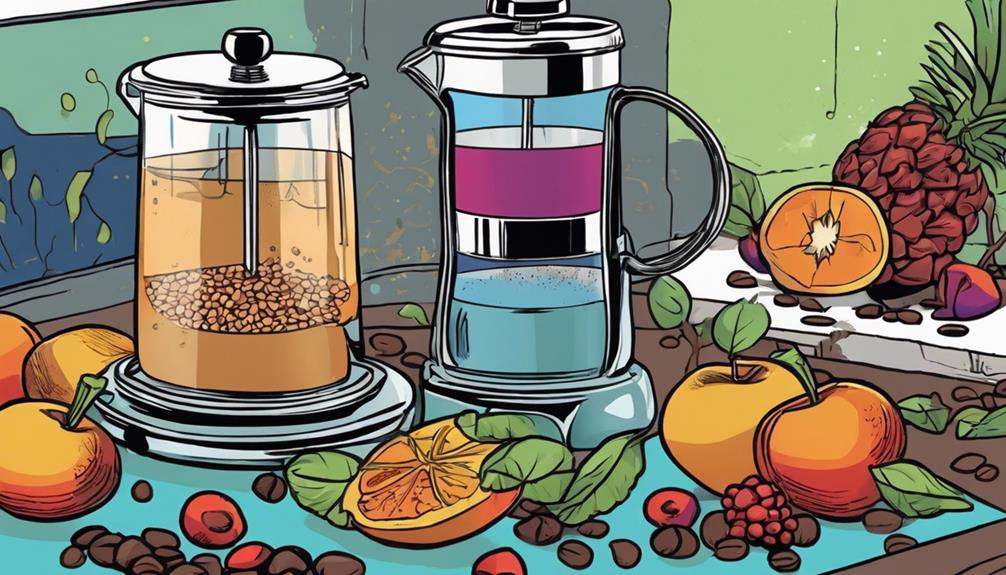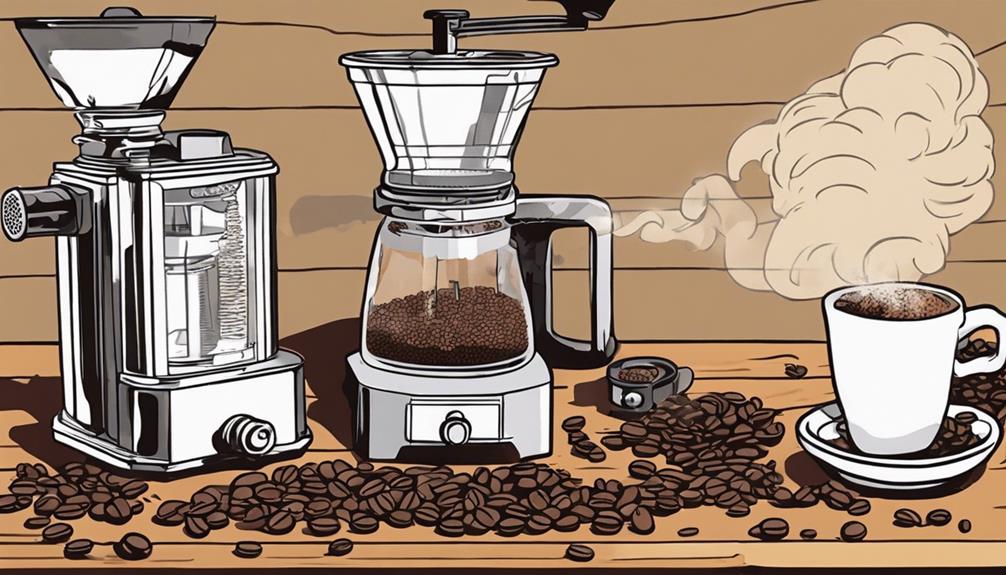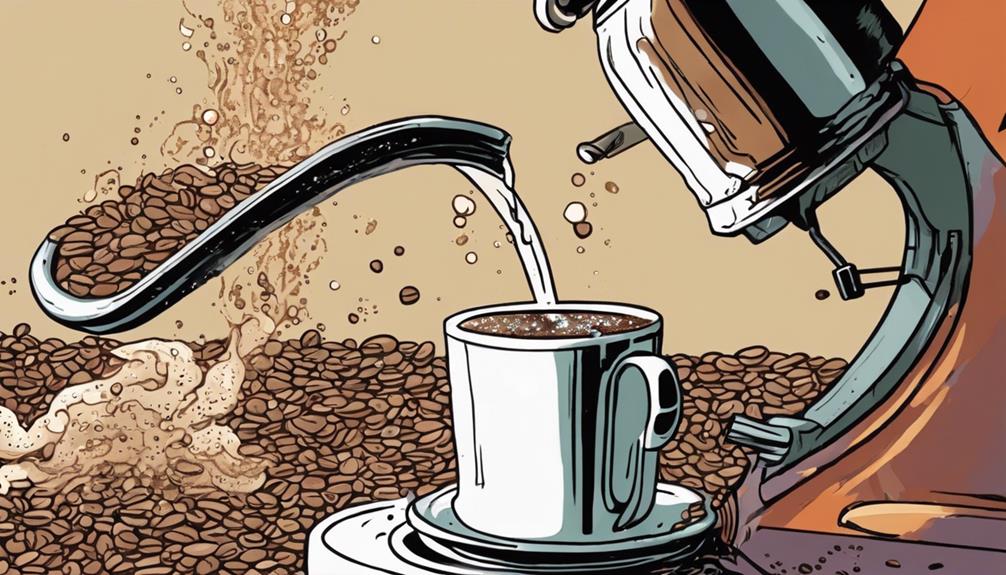Get shiny, strong hair by using coffee! Improve circulation, reinforce strands, and naturally protect them from damage. Combine coffee grounds with water to create a mask or use as a rinse after shampooing for added texture and shine. Gently massage onto your scalp to boost blood flow and exfoliate. Coffee seals cuticles, reduces breakage, and maintains a healthy pH balance for optimal hair growth. Elevate your hair’s overall health with DIY treatments or coffee-infused products. Uncover the secrets to vibrant hair with the power of coffee! Experience the advantages of a coffee hair treatment that can revive your dull and brittle hair, transforming it into shiny and resilient locks. By adding coffee to your hair care routine, you can nourish and rejuvenate damaged or lackluster strands, resulting in hair that appears and feels healthier. Whether you opt for a luxurious coffee-infused hair mask or simply mix coffee into your regular shampoo routine, the natural properties of coffee can do wonders for your locks. Bid farewell to lifeless hair and welcome glossy, vibrant hair with the simple incorporation of coffee into your beauty regimen.
Key Takeaways
- Create a coffee hair mask or rinse for shine and strength.
- Massage coffee into scalp to stimulate blood flow.
- Use coffee-infused products for healthier, shinier hair.
- Enjoy antioxidant benefits of coffee for hair health.
- Prioritize hair health with coffee treatments for vibrant locks.
Coffee Benefits for Hair Health
Discover five key benefits of using coffee for your hair's health. Coffee offers a myriad of advantages when it comes to hair care.
To start with, the caffeine in coffee stimulates hair growth by promoting blood circulation to the scalp. This boost in circulation can lead to healthier, stronger hair.
Additionally, the antioxidants present in coffee help protect both the scalp and hair from damage caused by environmental stressors.
Besides, using coffee can naturally darken your hair, adding depth and shine to your locks.
Not only does coffee enhance hair strength, but it also contributes to overall scalp health.
DIY Coffee Hair Treatments
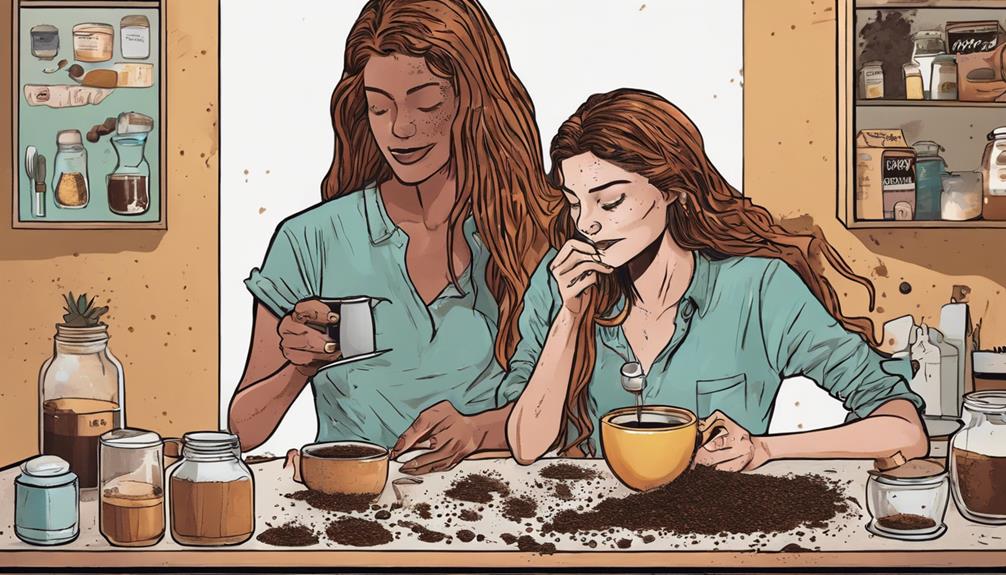
Enhance your hair health with simple and effective DIY coffee hair treatments. Incorporating coffee into your hair care routine can bring about noticeable improvements in shine and strength.
A popular method is creating a coffee hair mask by mixing coffee grounds with a bit of water or hair oil to form a paste. This mask can nourish and moisturize your hair, leaving it looking lustrous and revitalized.
Additionally, using a coffee rinse after shampooing can help improve hair texture, promote growth, and reduce frizziness. When applying coffee on your hair, make sure to massage it gently into your scalp to exfoliate and stimulate blood flow, which can contribute to healthier hair.
Remember that coffee can also smooth hair cuticles, making your strands appear sleeker. By incorporating DIY coffee hair treatments into your regimen, you can achieve stronger, shinier, and more vibrant hair naturally.
Coffee Rinse Benefits and Instructions
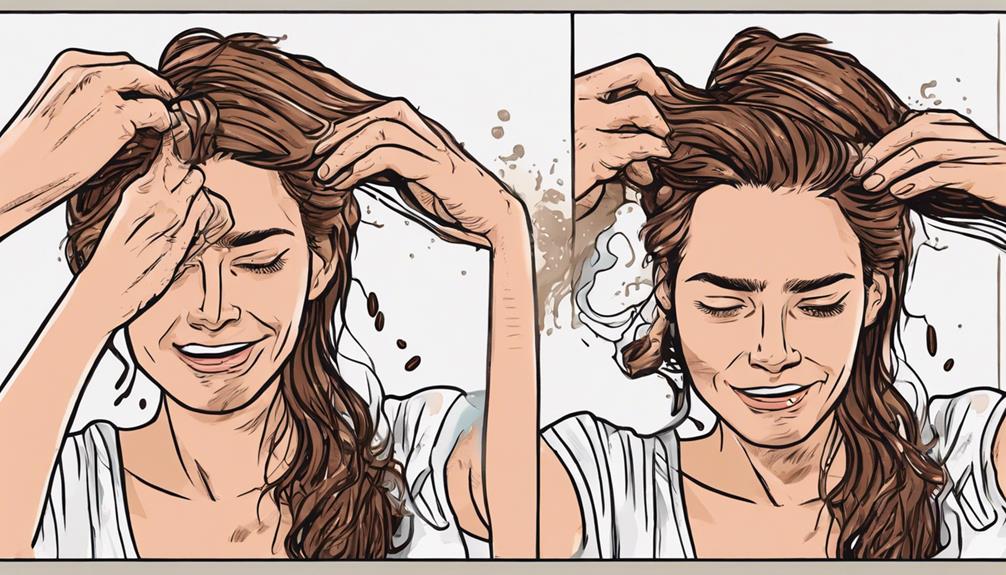
To maximize the benefits of coffee for your hair, let's explore the advantages and proper steps for utilizing a coffee rinse.
A coffee rinse is a great way to add shine to your hair, strengthen hair strands, and improve texture. By closing the cuticles and smoothing the hair strands, a coffee rinse can make your hair less prone to breakage and damage. Moreover, the acidity of coffee helps balance the pH levels of your scalp, promoting a healthy environment for hair growth.
Additionally, coffee rinses stimulate blood circulation in the scalp, which can boost hair growth and overall hair health. To make a coffee rinse, brew a strong cup of coffee, let it cool, and then pour it over your hair. Gently massage the coffee into your scalp and hair, leave it on for a few minutes, and then rinse it out with water.
Incorporating a coffee rinse into your hair care routine can lead to shinier, stronger, and healthier hair.
Coffee-Infused Hair Care Products
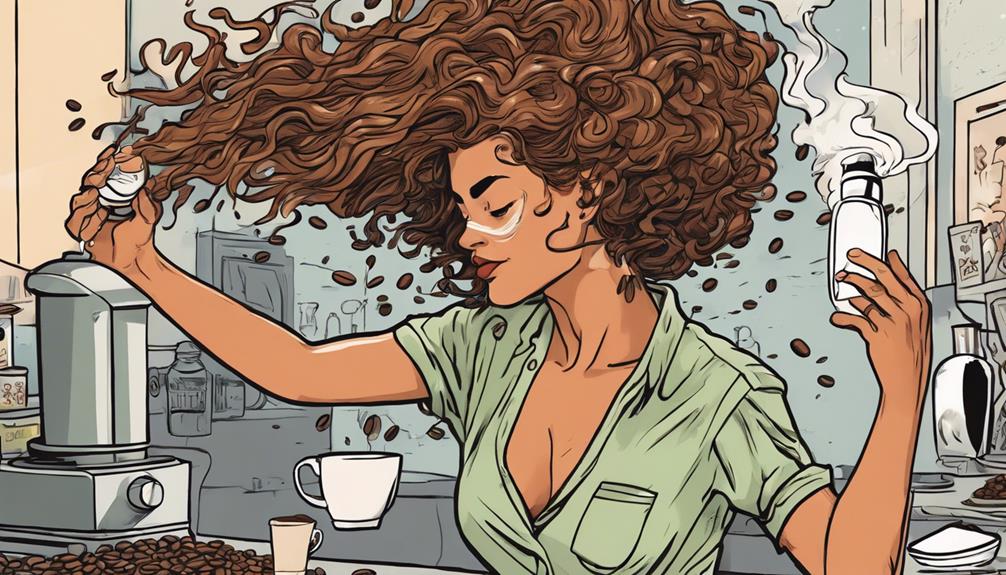
Coffee-infused hair care products, containing antioxidants and caffeine, offer a natural solution to promote hair growth and improve hair texture. These products are specially formulated to stimulate hair follicles, strengthen hair strands, and prevent breakage.
Coffee-infused shampoos effectively cleanse the scalp, while conditioners provide added shine and hydration to the hair. Additionally, hair masks enriched with coffee extracts play an essential role in repairing damaged hair and enhancing overall hair health.
Regular use of these products can remarkably boost hair growth, increase volume, and provide a caffeinated boost for healthier hair. By incorporating coffee-infused hair care into your routine, you can enjoy the benefits of antioxidants and caffeine that work harmoniously to nourish and revitalize your hair, leading to shinier, stronger, and more resilient locks.
Treat your hair to the natural goodness of coffee-infused products and witness the transformation in your hair's health and appearance.
Using Coffee for Hair Growth

You can harness the power of caffeine in coffee to stimulate your hair follicles, encouraging hair growth from the roots.
The antioxidants present in coffee can also shield your scalp and hair from damage, promoting overall hair health.
Research suggests that caffeine can enhance blood circulation to your scalp, contributing to improved hair growth.
Growth With Coffee
Using coffee as a hair treatment can effectively stimulate hair growth due to its caffeine content that penetrates hair follicles. The caffeine in coffee boosts blood circulation to the scalp, promoting faster and healthier hair growth.
Additionally, the antioxidants present in coffee protect the scalp and hair from damage, contributing to overall hair health. Research indicates that caffeine is beneficial in stimulating growth and reducing hair loss.
You can harness these benefits through DIY coffee treatments or by using coffee-infused products. By incorporating coffee into your hair care routine, you can improve the strength, shine, and texture of your hair.
Strength in Coffee
By harnessing the strength of coffee, your hair can benefit from increased follicle stimulation and improved growth potential. Coffee contains caffeine, which stimulates hair follicles, promoting hair growth and thickness.
The antioxidants present in coffee protect your scalp and hair from damage, enhancing overall hair health. Additionally, coffee boosts blood circulation to the scalp, delivering essential nutrients that contribute to stronger hair.
Apart from promoting hair growth, coffee can naturally darken hair and add shine, improving hair color vibrancy. Regular use of coffee on your hair can reduce breakage, enhance texture, and increase hair strength.
Embracing the natural properties of coffee can be a simple yet effective way to fight hair issues and maintain healthy, vibrant hair. Start incorporating coffee into your hair care routine to experience the benefits of its natural strength and nourishing properties.
Precautions and Side Effects of Coffee

Before smearing coffee on your hair, be wary of potential risks. Coffee may darken light hair and clog scalp pores, possibly causing acne.
Risks of Coffee Application
Care should be taken when applying coffee on your hair due to the potential risks and side effects associated with its usage.
The darkening effect of coffee may lead to dullness in light-colored hair. Moreover, coffee has the potential to clog scalp pores, potentially causing acne breakouts.
It's important to note that the FDA hasn't officially approved the use of coffee on hair, so caution is advised when using it for hair treatments.
To minimize any adverse reactions, it's recommended to limit the application of coffee on your hair to once a week. Additionally, conducting a patch test before applying coffee to your hair can help identify any sensitivities or side effects.
Being mindful of these risks and taking necessary precautions can help guarantee a positive experience when using coffee for hair care.
Scalp Pore Concerns
Take precautions when considering the application of coffee on your scalp to prevent potential pore blockages and subsequent acne breakouts. Here are some essential points to keep in mind:
- Block Pores: Coffee, if not rinsed thoroughly, can block the pores on your scalp, leading to acne breakouts. Ensure proper cleansing after application.
- Dullness for Light-Colored Hair: Darkening effects of coffee may cause dullness in light-colored hair. Consider this aspect before applying coffee to your hair.
- Limit Application: To minimize the risk of adverse reactions, restrict the application of coffee on your scalp to once a week. Overuse can worsen pore concerns and other issues.
Remember to conduct a patch test before using coffee on your scalp to check for any sensitivities. Additionally, note that the FDA hasn't approved the use of coffee on hair, so proceed with caution.
FDA Guidance on Coffee
Exercise caution when considering the application of coffee on your hair, as the FDA hasn't approved its use for this purpose.
While coffee rinses can potentially darken hair, especially for those with lighter hair colors, the acidic nature of coffee can help smoothen hair cuticles and reduce frizziness. However, be aware that the application of coffee may clog pores on the scalp, leading to acne issues.
To mitigate these risks, it's advisable to limit the use of coffee on your hair to once a week and always conduct a patch test before full application. The FDA guidance serves as a reminder to proceed with care when utilizing coffee for hair treatments.
Be mindful of the potential side effects, especially if you have sensitive skin or scalp. Prioritize your hair health by taking the necessary precautions and being informed about the implications of using coffee on your hair.
The Science Behind Coffee for Hair
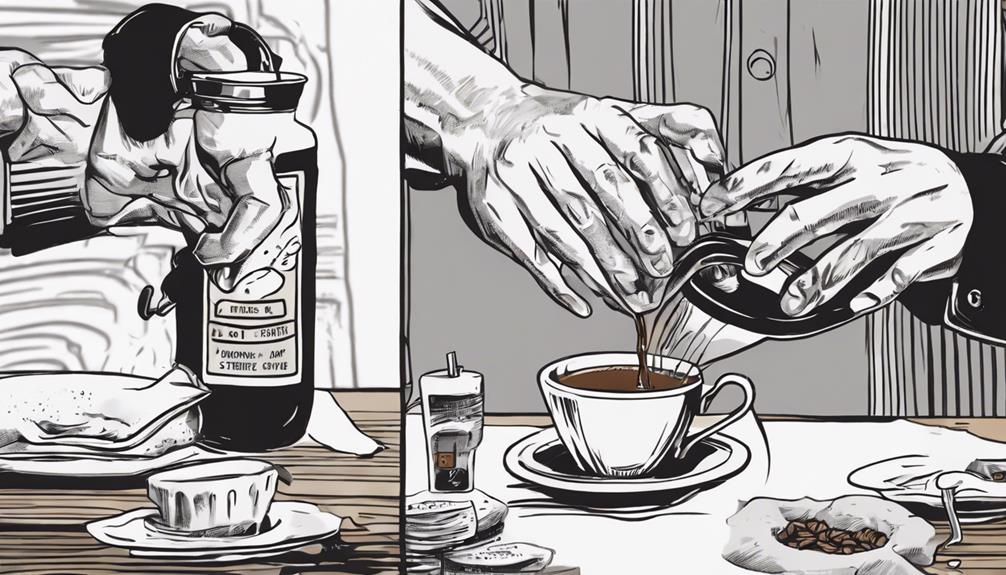
Enhancing blood circulation and promoting healthy hair follicles, caffeine in coffee is a key ingredient in understanding the science behind coffee for hair.
The benefits for hair are numerous:
- Promoting Hair Growth: Caffeine stimulates hair follicles, encouraging growth and improving hair density.
- Preventing Hair Loss: Research shows that caffeine can block the DHT hormone, reducing hair loss and maintaining hair thickness.
- Hair Protection: The antioxidants in coffee shield hair from free radical damage, preventing breakage and maintaining overall hair health.
Additionally, the polyphenols found in coffee possess anti-inflammatory properties that can reduce scalp inflammation, creating a conducive environment for hair growth.
Frequently Asked Questions
How Do You Make Your Hair Shiny With Coffee?
To make your hair shiny with coffee, brew a strong coffee, let it cool, and pour it over your hair as a final rinse after shampooing. Massage it in, leave for a few minutes, then rinse out for added shine and strength.
Does Coffee Make Your Hair Shiny?
Sure, coffee can definitely add shine to your hair! Its acidity helps smooth out frizz, making your hair look smoother and healthier. Regularly applying coffee can protect your hair, making it shinier and stronger.
How to Apply Coffee to Your Hair?
To apply coffee to your hair, brew a light coffee, strain it, and let it cool. Apply to hair and scalp, cover with a shower cap for a bit, then rinse and condition. Consider adding essential oils for extra benefits.
What Should I Mix With Coffee for Hair?
Mix coffee with different ingredients like coconut oil, honey, or aloe vera for various hair benefits. Experiment with blends to find what works best for your hair type. Enjoy the natural shine and strength! Embracing natural ingredients in your hair care routine can also help enhance the richness of your natural shade. For example, adding a splash of brewed coffee to your conditioner can help enrich dark hair tones, giving it a rich natural shade. When combined with coconut oil, this blend can not only add shine to your hair, but also provide nourishment and hydration, leaving your locks looking and feeling their best.
Conclusion
So, there you have it – adding coffee to your hair care routine can give your locks the shine and strength they deserve!
Whether you try a DIY treatment or opt for coffee-infused hair products, your hair will thank you.
Remember, the proof is in the pudding – give it a shot and see the results for yourself!


